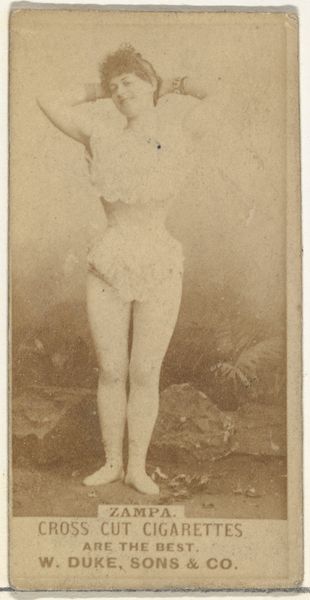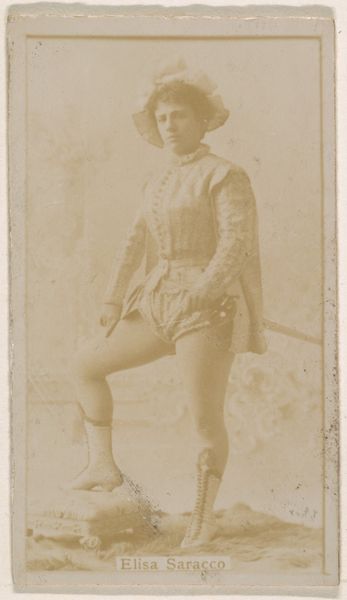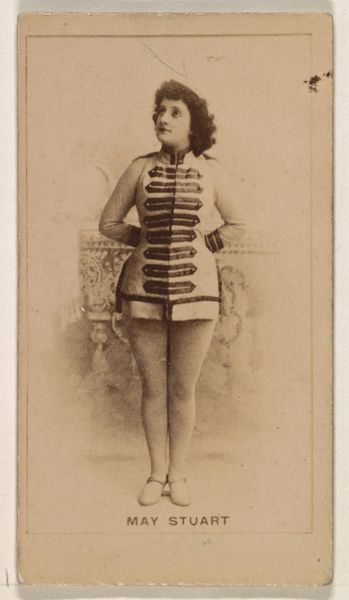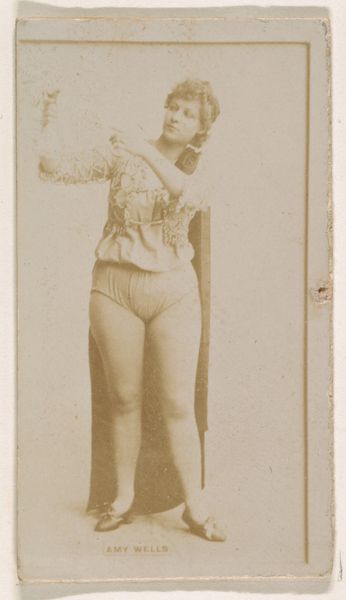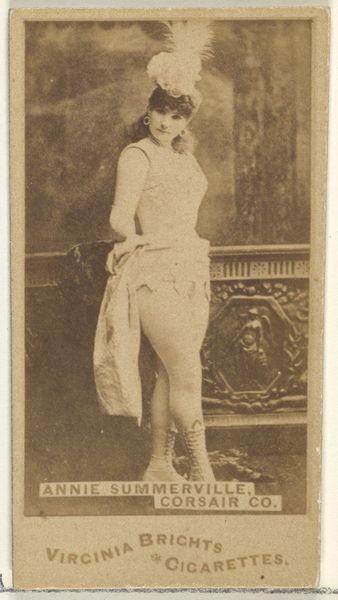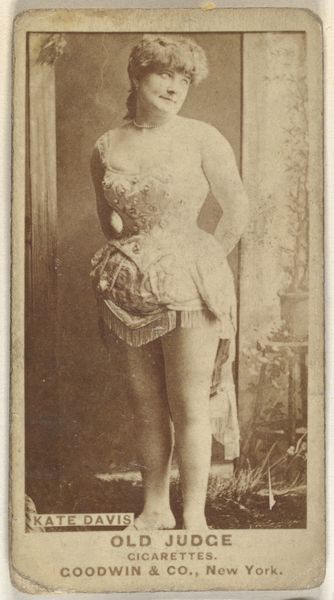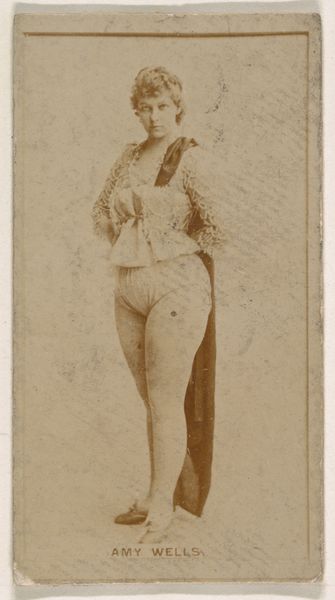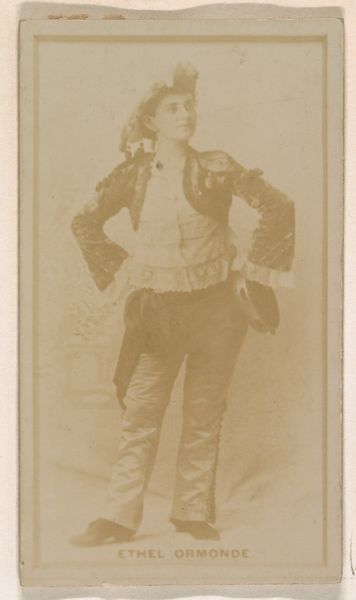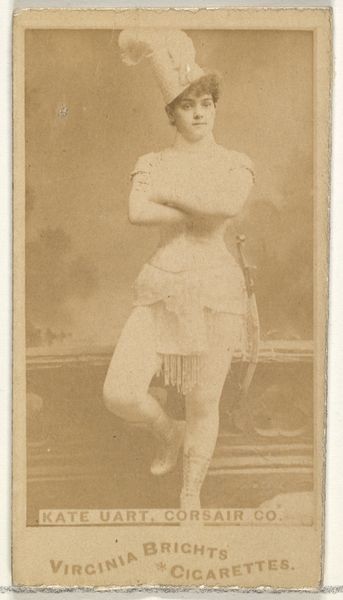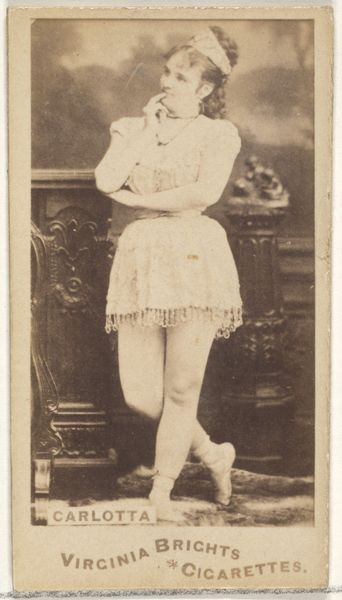
Madge Lawner, from the Actresses series (N245) issued by Kinney Brothers to promote Sweet Caporal Cigarettes 1890
0:00
0:00
drawing, print, photography
#
portrait
#
drawing
# print
#
figuration
#
photography
#
erotic-art
Dimensions: Sheet: 2 1/2 × 1 7/16 in. (6.4 × 3.7 cm)
Copyright: Public Domain
Art Historian: Let's turn our attention to this intriguing print from 1890, currently residing at the Metropolitan Museum of Art. It is one of a series produced by the Kinney Brothers Tobacco Company, titled "Madge Lawner, from the Actresses series (N245) issued by Kinney Brothers to promote Sweet Caporal Cigarettes." Art Historian: Oh, there’s a provocative air about it! The lighting creates an almost ethereal effect on Madge. But what’s most striking is the... performative element. She is poised and confident, yes? Yet her gaze feels a touch melancholic, burdened perhaps. Art Historian: It is crucial to remember the context: The rise of commercial culture, celebrity endorsements and the burgeoning advertising industry. These trade cards served as both advertising and collectible items, tapping into public fascination with actresses and entertainers. Actresses became objects of desire, yet commodified and commercialized. Art Historian: Yes, there is that duality. Madge's costume – part tailored jacket, part playful ruffle – also feels very symbolic. A tension between respectability and… allure? The theatricality isn’t only about the stage; she's embodying a role. Art Historian: Exactly. Consider that in the late 19th century, stage actresses had a liminal position in society. Admired for their talent but also viewed with moral suspicion, these women lived outside the Victorian societal expectations. Placing the image on a cigarette card adds a certain social currency, connecting actresses' 'scandalous' persona and a dangerous indulgence. Art Historian: And cigarettes were, themselves, powerful symbols! Freedom, rebellion. Here it seems intertwined with notions of beauty, of feminine performance, a dangerous commodity in many senses. Madge becomes more than a portrait – a representation of modern identity. The ambiguity makes her iconic, does it not? Art Historian: It really captures the changing cultural values of the time: as women were beginning to push against existing restraints and new modes of mass media were simultaneously commodifying everything. These tobacco cards were certainly part of this new visual landscape. Art Historian: The symbols really create this space in between: freedom and constraint, performance and reality, fame and obscurity… that is what lingers with me. Art Historian: And for me, seeing this object highlights the power of advertising in shaping the narrative around gender, commerce, and culture itself.
Comments
No comments
Be the first to comment and join the conversation on the ultimate creative platform.

